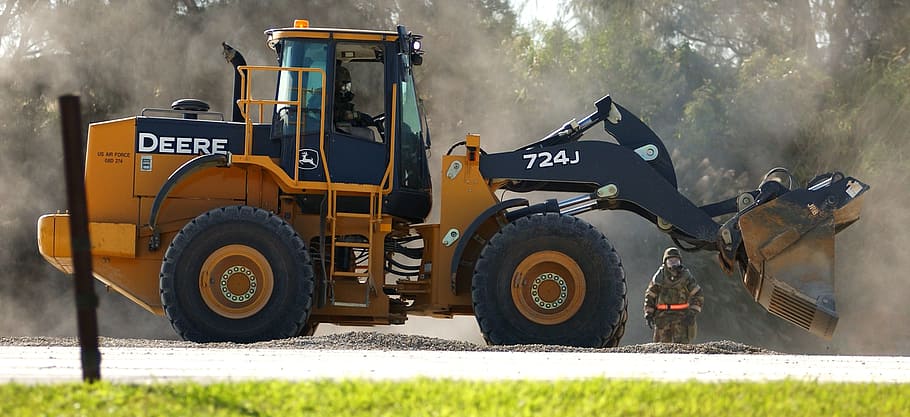President Trump’s Executive Order, signed on April 28, 2025, titled “Enforcing Commonsense Rules of the Road for America’s Truck Drivers,” reinforces existing federal regulations by mandating that all commercial truck drivers operating in the United States must demonstrate English language proficiency. The goal is to enhance highway safety and ensure that all drivers can effectively communicate during inspections, at checkpoints, and in case of emergencies.
Here’s a breakdown of what truckers, carriers, and logistics companies need to know — in FAQ format:
1. What Does President Trump’s Executive Order Mean for English Requirements?
The executive order mandates that commercial truck drivers must be able to read and understand traffic signs, communicate verbally with traffic officers and inspection agents, and complete documentation in English. This applies during all interactions with entities like the Department of Transportation, Customs and Border Protection, and state highway patrol. These rules align with the longstanding federal regulation 49 CFR §391.11(b)(2).
2.Is President Trump’s Order on Truck Driver Language Requirements a New Rule?
Not exactly. The Federal Motor Carrier Safety Regulations, first introduced in the 20th century, have included English proficiency rules for decades. However, recent administrations were more lenient in enforcement. President Trump’s executive order reverses that by directing the U.S. Department of Transportation and the Federal Motor Carrier Safety Administration to increase inspections and apply stricter standards.
3. Who Will Be Affected by Trump’s Executive Order for Truckers?
This order affects:
- Immigrant drivers with limited English skills — Drivers whose primary language is not English may face stricter screening and roadside inspection challenges. For context, see FMCSA’s English language rule for drivers.
- Non-citizen commercial license holders — Especially those driving under visa programs such as TN (Trade NAFTA), H-2B (Temporary Non-Agricultural Workers), or B1 (Business Visitor for CDL Drivers).
- Trucking companies that recruit foreign labor — Companies using international recruiting agencies or temporary visa holders must verify drivers’ language qualifications and compliance.
- Training centers preparing drivers for CDL exams — Commercial Driver’s License (CDL) programs must now prioritize English training and assess readiness under stricter standards.

4. Why Did President Trump Sign the Executive Order for Commercial Truck Drivers?
According to the White House Press Office, the order was introduced to improve road safety, especially during inspections and emergency stops. Supporters believe it will reduce communication errors, while critics say it could shrink the already struggling workforce in the trucking industry.
5. How Will the Executive Order Be Enforced for Truck Driver Language Proficiency?
Key enforcement changes include:
- Mandatory English language testing as part of CDL licensing
- On-the-spot language checks by DOT officers or Commercial Vehicle Safety Alliance inspectors
- Employer responsibility to verify driver proficiency before dispatch
6. What Are the Consequences for Not Following the Truck Driver Language Order?
Drivers who do not meet the required English standards may:
- Receive citations or fines
- Be placed out of service until compliant
- Lose their CDL license, either temporarily or permanently
In addition, employers who knowingly assign non-compliant drivers could face federal penalties and audits.
7. How Is the Trucking Industry Reacting to Trump’s Executive Order?
The industry has responded with a mix of support and concern:
- The American Trucking Associations (ATA) supported the focus on safety but requested clearer implementation guidelines.
- The Owner-Operator Independent Drivers Association (OOIDA) raised concerns that the rule may unfairly impact skilled immigrant drivers.
- Several logistics firms believe the new rule may worsen the labor shortage by creating additional hiring barriers.
8. How Can Truck Drivers and Carriers Prepare for Compliance With Trump’s Order?
To stay compliant, both drivers and companies should take the following steps:
✅ Ensure all drivers — current and future — meet the English requirement
✅ Incorporate English proficiency into CDL training programs
✅ Follow updates from the Federal Motor Carrier Safety Administration, Department of Transportation, and White House
✅ Consult legal and compliance experts to review internal processes
🔚 Final Thoughts on President Trump’s Executive Order for Truck Drivers
At Tempus Logix, we understand the intent behind President Trump’s Executive Order — to improve communication, safety, and professionalism within the trucking industry. We fully support measures that enhance road safety and compliance. However, we also recognize the challenges this policy presents, especially for hardworking immigrant drivers who contribute significantly to the transportation sector. We believe that language should never become a barrier to opportunity. While we agree with the importance of English proficiency, we also believe in offering support, flexibility, and compassion. Drivers need time, resources, and encouragement — not pressure — to meet new expectations. Our commitment is clear: we will continue to stand behind our drivers, offer solutions when language becomes a challenge, and do our part to ensure a fair and effective transition. Regulations may change, but our dedication to safety, professionalism, and the people behind the wheel remains the same.
“By accepting the President’s new rules, we move forward — and at Tempus Logix, we stand ready to support drivers and carriers through every regulatory change on the road ahead.”










